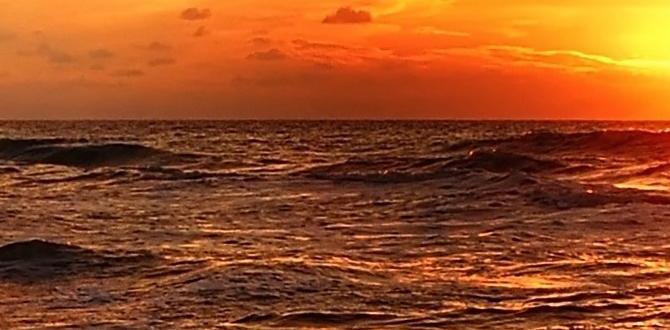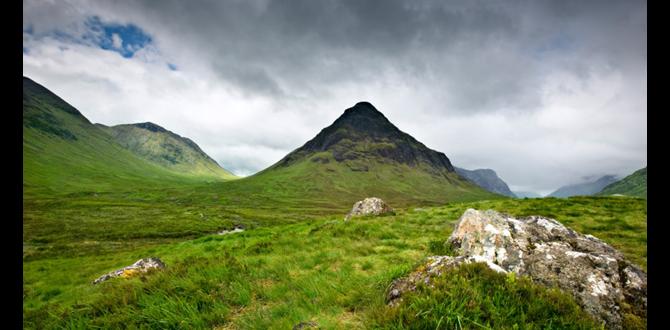Bergen accessible travel guide: Essential tips for a smooth and enjoyable trip to Norway’s charming coastal city.
Welcome to Bergen, a city where stunning fjords meet vibrant culture! Planning a trip can sometimes feel overwhelming, especially when you want to ensure everyone in your group can experience the magic. We know that making sure your travels are comfortable and stress-free is key, whether you’re navigating a new city with little ones or seeking reliable solutions for personal needs. This guide is designed with you in mind, offering practical advice to explore Bergen with confidence. Get ready to discover hidden gems and breathtaking views, all while enjoying a journey tailored to your needs. We’ll walk you through everything to make your Bergen adventure truly unforgettable.
Planning Your Accessible Bergen Adventure
Bergen, Norway’s second-largest city, is a visual feast with its colorful wharf houses, dramatic mountain backdrop, and deep fjords. While its historic charm is undeniable, it’s also a city that’s increasingly welcoming to all travelers. From cobblestone streets to hilly terrain, a little preparation goes a long way in ensuring your visit is as seamless as it is unforgettable.
Getting Around Bergen: Navigating with Ease
Bergen offers a good number of accessible transportation options. Getting from the airport to the city center is straightforward, and once you’re in town, you’ll find ways to explore its many attractions without major hurdles.
Airport Transfers
When arriving at Bergen Airport, Fleshu, you have several convenient options to reach the city center:
Flybussen Airport Bus: This is a popular and relatively accessible option. The buses are usually equipped with ramps or lifts for wheelchairs and have designated spaces. You can check their website for up-to-date accessibility information and routes.
Light Rail (Bybanen): The Bybanen tram line connects the airport directly to Bergen city center. The trams are modern and generally accessible, with level boarding and ample space. It’s a scenic and efficient way to travel.
Taxis: Accessible taxis can be booked in advance. While they might be more expensive, they offer door-to-door service and are equipped to handle mobility needs.
Public Transportation within Bergen
Bergen’s public transport system, managed by Skyss, is working towards greater accessibility.
Buses: Many newer buses are low-floor with ramps. Look for the wheelchair symbol on bus stop signs. It’s always a good idea to check the specific route’s accessibility status on the Skyss website if possible.
Light Rail (Bybanen): As mentioned, the Bybanen is a reliable and accessible option for getting around different parts of the city and its outskirts.
Navigating the Terrain
Bergen is known for its hills and cobblestone streets, which can present challenges.
Cobblestones: Areas like Bryggen, the UNESCO World Heritage wharf, have historic cobblestone streets. Take your time, as these can be uneven.
Hills: Some parts of the city are quite steep. Consider the routes you plan to take and whether public transport or taxis would be more comfortable for certain segments.
Key Accessible Attractions in Bergen
Bergen is brimming with history and natural beauty, and many of its top attractions are making efforts to be more inclusive.
Bryggen (The Hanseatic Wharf)
This iconic UNESCO World Heritage site is a must-see. While the narrow alleyways and historic wooden buildings are part of its charm, they can also be uneven.
Main Pathways: The open areas and main pathways through Bryggen are generally passable.
Museums: The Hanseatic Museum and Schøtstuene offer insights into Bergen’s history. Check their individual websites for specific accessibility details, as some older parts of the buildings might have limitations.
Fløyen Mountain and the Fløibanen Funicular
A trip up Mount Fløyen offers breathtaking panoramic views of the city and surrounding fjords.
Fløibanen Funicular: The funicular cars are equipped to carry wheelchairs and strollers. There is an accessible path from the lower station to the boarding area, and the summit has accessible viewing platforms and walking paths. You can find more details on their Fløyen website.
Fish Market (Fisketorget)
Located on the harbor, the Fish Market is a bustling hub of activity.
Accessibility: The main outdoor area is generally accessible, with paved surfaces. Some stalls might have steps, but navigating the market is usually manageable.
Bergenhus Fortress (Bergenhus Festning)
This historic fortress complex is home to Håkon’s Hall and Rosenkrantz Tower.
Grounds: The grounds of the fortress are largely accessible with paved paths.
Håkon’s Hall: This medieval hall is generally accessible.
Rosenkrantz Tower: Accessing the upper levels of the tower can be challenging due to narrow, winding stairs. It’s best to check the latest information from the Norwegian Armed Forces Museum if you plan to visit.
Han Gjeskors Norsk Kulturfaglig Utvalg (HGNKU) – Norwegian Cultural Studies Committee
While not a single tourist attraction, this is an example of an organization that might offer resources or insights into cultural accessibility in Norway. You can explore Norwegian cultural heritage sites and check their accessibility policies.
Accommodation Tips for Accessible Stays
Finding the right place to stay is crucial for a comfortable trip. Many hotels in Bergen are increasing their accessible room offerings.
Book in Advance: Accessible rooms are in high demand. Book your accommodation as early as possible.
Contact Hotels Directly: Don’t just rely on online booking descriptions. Call or email the hotel to confirm the specifics of their accessible rooms, such as bathroom features, door widths, and available amenities.
Location is Key: Consider hotels located in flatter areas or close to public transport hubs to minimize travel challenges.
Essential Packing for Your Bergen Trip
Packing smart can make all the difference in enjoying your travels, especially when you have specific needs. Bergen’s weather can be unpredictable, so layers are your best friend!
Clothing and Footwear
Waterproof and Windproof Outerwear: Bergen is known for its rain and wind. A good quality waterproof jacket with a hood is essential.
Layering Clothing: Pack thermals, long-sleeved shirts, sweaters, and fleeces. This allows you to adjust to changing temperatures and indoor/outdoor conditions.
Comfortable, Waterproof Shoes: This is paramount! Look for shoes with good grip and support, ideally waterproof, to tackle cobblestones and the occasional rain.
Sturdy Pants: Jeans can be heavy and slow to dry if they get wet. Consider quick-drying synthetic pants or comfortable trousers.
Scarf, Hat, and Gloves: Even in milder seasons, these can be lifesavers for comfort on breezy days.
Personal Needs and Comfort Items
For travelers who require additional comfort and support, packing strategically is key.
Incontinence Products: If you use adult or child diapers, pack a sufficient supply. Knowing you have reliable, comfortable options like travel-friendly adult diapers can alleviate stress. Look for products designed for discretion and absorbency for long days of sightseeing. For parents traveling with children, ensuring you have the right child diapers for travel can make flights and outings much smoother.
Medications: Pack any personal medications in their original containers, along with a copy of your prescription.
Prosthetics or Mobility Aids: Ensure any personal mobility aids are in good working order and consider bringing spare parts if applicable.
Comfort Items: A small travel pillow, a favorite blanket, or familiar snacks can add a significant layer of comfort during transit and downtime.
Technology and Gadgets
Portable Power Bank: Essential for keeping your phone and other devices charged on the go, especially when relying on navigation apps or translation tools.
Universal Travel Adapter: Norway uses Type C and F plugs. A universal adapter will ensure you can charge all your devices.
Camera: To capture those stunning fjord views!
Noise-Canceling Headphones: Great for a more peaceful journey on planes, trains, or buses.
Packing List Organizer
Here’s a quick checklist to help visually organize your packing:
| Category | Items | Notes |
|---|---|---|
| Clothing | Waterproof Jacket, Layers (thermals, sweaters), Waterproof Pants, Comfortable Shoes | Prioritize comfort, warmth, and weather resistance. |
| Outerwear & Accessories | Hat, Scarf, Gloves | For windy and colder days. |
| Personal Care | Incontinence Products (Adult/Child Diapers), Medications, Prescriptions | Pack sufficient supply and keep prescriptions handy. |
| Documents | Passport, Visa (if applicable), Flight/Hotel Bookings, Travel Insurance Info | Keep digital and physical copies organized. |
| Electronics | Power Bank, Travel Adapter, Phone Charger | Ensure all devices can be charged. |
| Miscellaneous | Reusable Water Bottle, Snacks, Small Backpack/Day Bag | For convenience and hydration. |
Experiencing Bergen’s Charm: Tours and Activities
Once you’re settled, it’s time to explore! Many tour operators are becoming more aware of accessibility needs.
Accessible Bus and Walking Tours
Several companies offer city tours.
Contact Operators in Advance: It’s always best to contact tour operators directly to inquire about the specific accessibility features of their tours. Some may offer private tours that can be customized to your needs.
Hop-On Hop-Off Buses: These can be a good option as they allow you to control the pace and get off at stops that are most accessible or interesting to you. Check the accessibility of the buses themselves.
Fjord Cruises
Cruising the Norwegian fjords is an unforgettable experience. Many modern ferry and cruise operators plying the fjords are equipped with accessible decks and restrooms.
Prioritize Modern Ferries: Newer vessels are generally more accessible.
Boarding: Communicate with the ferry company about boarding assistance if needed.
Views: Enjoy stunning views from accessible viewing decks.
Museums and Galleries
Many of Bergen’s museums have made significant strides in accessibility.
KODE Art Museums: This complex of museums often has accessible entrances, elevators, and restrooms. Check the KODE website for current details on which of their buildings are most accessible.
Hanseatic Museum and Schøtstuene: As mentioned earlier, check their specific accessibility.
Other Cultural Institutions: Research smaller galleries and cultural centers for their accessibility features.
Planning for Diaper Needs While Out and About
For parents traveling with children or adults requiring incontinence products, planning for bathroom breaks and product changes is essential.
Identify Accessible Restrooms: Look for restrooms marked with an international accessibility symbol. These are usually larger and equipped with grab bars.
Carry a Changing Kit: A compact changing kit with extra diapers, wipes, and a disposal bag is invaluable. For adults, discreet pouches can hold a change of adult diapers and necessary toiletries. For parents, a well-organized child diaper bag with essentials is a lifesaver.
Utilize Public Facilities: Major attractions, shopping centers, and transport hubs typically have accessible restrooms. Don’t hesitate to ask for directions.
Consider Discreet Options: If discretion is a concern, modern incontinence products are designed to be very discreet and comfortable.
Accommodation Spotlight: Accessible Hotels in Bergen
While many hotels offer good accessibility, some generally stand out. It’s always best to double-check directly with the hotel about their specific facilities.
Thon Hotel Orion: Often praised for its modern facilities and convenient location near Bryggen. They typically have accessible rooms available.
Radisson Blu Royal Hotel, Bergen: Centrally located, this hotel is known for its service and often has rooms designed to accommodate guests with disabilities.
Scandic Hotels: This chain in Norway is usually very good with accessibility. Check individual Scandic properties in Bergen like Scandic Byparken or Scandic Torget. They often have dedicated accessible rooms and are attentive to guest needs.
Table of Sample Accessible Hotels
| Hotel Name | Location | Typical Accessibility Features | Notes |
| :——————— | :—————- | :—————————————————————— | :—————————————————————————————- |
| Thon Hotel Orion | Near Bryggen | Accessible rooms, elevators, accessible bathrooms | Excellent proximity to key attractions. |
| Radisson Blu Royal Hotel | City Center | Accessible rooms, elevators, roll-in showers (often) | Convenient for exploring the heart of Bergen. |
| Scandic Hotels (e.g., Byparken) | Central | Accessible rooms, wider doorways, accessible bathrooms, elevators | Scandic is a reliable brand for accessibility across Scandinavia. Confirm specific room features. |
When booking, always confirm details like:
Door widths
Bathroom layout (grab bars, space to maneuver)
Shower type (roll-in vs. tub)
Bed height
Availability of connecting rooms if needed
Dining in Bergen: Accessible Eateries
Bergen offers a fantastic culinary scene. From fresh seafood at the Fish Market to traditional Norwegian dishes, there’s something for every palate.
Restaurants at Bryggen: Some of the restaurants situated along Bryggen are on the ground floor and offer good accessibility, though the immediate outdoor surfaces might be uneven.
Modern Restaurants: Newer establishments and those in modern hotel complexes often have excellent accessibility in their dining areas.
Fish Market Stalls: While the stalls themselves are outdoors, the surrounding area is paved, making it relatively easy to access. You can enjoy fresh seafood dishes in a lively atmosphere.
Ask for Assistance: If you’re unsure about a restaurant’s accessibility, don’t hesitate to call ahead or ask staff for assistance. Many are happy to guide you to the most accessible table.
Tips and Tricks for a Stress-Free Visit
Beyond the practicalities, a few extra tips can enhance your Bergen experience.
Embrace the Pace: Bergen is best enjoyed at a leisurely pace. Don’t try to cram too much into one day.
Learn a Few Norwegian Phrases: While most Norwegians speak excellent English, knowing a few basic phrases like “Takk” (Thank you) and “Unnskyld” (Excuse me) is always appreciated.
Utilize Local Tourist Information: The Bergen Tourist Information office is a great resource for maps, advice, and up-to-date accessibility information.
Stay Hydrated and Snack Smart: Carry a reusable water bottle and some snacks. If you rely on specific dietary items or need incontinence products for extended outings, a small, discreet bag with essentials is recommended. For those needing adult or child diapers, having a few on hand for long days of exploration can prevent any worries.
Consider Travel Insurance: Always a good idea for any trip, especially when you have specific needs to accommodate.
Check Bergen Havn for Cruise Accessibility:** If arriving by cruise ship to Bergen Havn, inquire about accessible disembarkation options and transport from the port.
Frequently Asked Questions about Bergen Accessible Travel
Q1: Is Bergen a walkable city for wheelchair users?
A1: Bergen has a mix of terrains. The harbor area, Bryggen, and some central streets are relatively flat and paved, though Bryggen has historic cobblestones. Hilly areas and steep streets exist, so using public transport (accessible trams and buses) or taxis is advisable for certain routes.
Q2: Are the Fløibanen Funicular and Mount Fløyen accessible?
A2: Yes, the Fløibanen funicular is accessible for wheelchairs and strollers, and there are accessible viewing platforms and paths at the top of Mount Fløyen, offering beautiful panoramic views.
Q3: What should I pack for unpredictable Bergen weather?
A3: Pack layers! Essential items include waterproof and windproof outerwear, warm sweaters, comfortable waterproof shoes with good grip, and accessories like hats and gloves. Quick-drying clothing is also recommended.
Q4: Where can I find accessible accommodation in Bergen?
A4: Many hotels offer accessible rooms. Brands like Scandic, Thon Hotels, and Radisson Blu are known for their accessibility. Always book in advance and contact the hotel directly to confirm specific room features and availability.
Q5: Are there accessible public restrooms in Bergen?
A5: Yes, accessible public restrooms can be found in major attractions, shopping centers, transport hubs, and many public buildings. Look for the international accessibility symbol.
Q6: How can I manage incontinence needs when sightseeing in Bergen?
A






